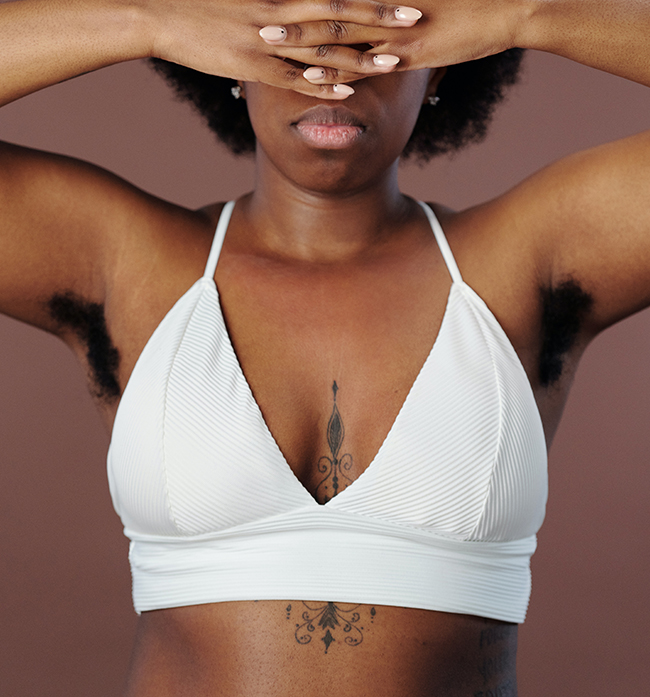
Whether it's '70s nostalgia or a way to protest the patriarchy, the 'bush' is trending again. But it's not the only fashion for pubic hair, there are also partial epilation and many other "hairstyles". And that's completely normal. Because at the end of the day, it's a personal decision and no one (except you) should have a say in how you decide to wear your pubic adornment. We are in 2022.
A brief history of female body hair removal & beauty standards
Well, after much searching on the great internet and realizing that the art, media and culture we consume is constantly changing and shaping our perception of bodily beauty - we have come to determine some important moments in the history of pubic hair.
Ancient Egypt
Surely you already know about sugar waxing, so it won't be hard for you to empathize with the women of Ancient Egypt. They practiced what was called "sugaring" (from sugar, which means sugar) in the following way: they melted sugar into a paste that they used to remove hair with strips of cloth. They also used bronze blades and were the first to shave their pubic hair in a triangular shape above the vulva.
Ancient Greece
There's a reason you don't see ancient Greek sculptures of women with pubic hair (did you notice they're all hairless?) because apparently the trend of not having any hair down there at all was in vogue in ancient Greece, and women just they simply pulled out their pubic hairs one by one. Oh!
Renaissance Italy
Being a woman in 16th century Italy was not something simple... Many researchers call the Renaissance period " the golden age of hair removal " and rightly so. During that time, there was an explosion of prescriptions for removing body hair - intended only for women - and other beauty rituals, some of which were even dangerous. In a "book of secrets" from 1532, you find the following recipe:
"How to remove or lose hair from any part of the body:
Boil a solution composed of one pint of arsenic and one-eighth of a pint of quicklime. Go to a bath or a hot room and apply the solution over the area to be depilated. When the skin feels hot, wash quickly with warm water so that the flesh does not come off. " (source)
The modern era
In 1880, King Camp Gillette launched the ancestor of the conventional razor we know today. A few years later, in 1915, he also launched the first women's razor (1915), the Milady Neckline, in pink velvet packaging.
during the Second World War, stocks of nylon - and including nylon stockings - disappeared, which led women to shave their legs daily, thus becoming a custom preserved to this day.
The period of the hippie years, 1970
In the 70s and 80s, "excess hair signified virility and lubricity (...) and many male performers sported mustaches, armpit and chest hair, but women also had armpit and pubic hair" ( source ). It was the era of natural pubic hair At the same time there were protests for human rights and autonomy over one's own body, the fashion for the "bush" and body hair was part of the political and cultural changes of the time.

Photo source: Pexels.com/cliff-booth
21st century
The early 2000s was the perfect time to experiment with pubic hair styling and care. Women began to explore new fashion trends that went "hand in hand" with the presence or absence of body hair: Brazilian briefs, low-waisted jeans. All along with increasingly unrealistic beauty standards. At the same time, new movements (hipsters - or new hippies) appeared precisely to not conform to the norms, just like in the 70s.
In the end, is it a good idea to wax your pubic hair or not? Should you let it grow? Pubic hair turning gray? And how much hair is normal for a woman?
The answers can be wildly different and very personal, depending on your own preferences and grooming habits. But one thing is for sure: taking care of your pubic hair is a form of self-love.

Photo source: Pexels.com/cliff-booth






















